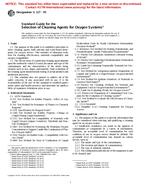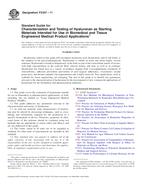1.1 This test method describes a procedure for field measurement of the rate of infiltration of liquid (typically water) into soils using double-ring infiltrometer.
1.2 Soils should be regarded as natural occurring fine or coarse-grained soils or processed materials or mixtures of natural soils and processed materials, or other porous materials, and which are basically insoluble and are in accordance with requirements of 1.5.
1.3 This test method is particularly applicable to relatively uniform fine-grained soils, with an absence of very plastic (fat) clays and gravel-size particles and with moderate to low resistance to ring penetration.
1.4 This test method may be conducted at the ground surface or at given depths in pits, and on bare soil or with vegetation in place, depending on the conditions for which infiltration rates are desired. However, this test method cannot be conducted where the test surface is below the ground water table or perched water table.
1.5 This test method is difficult to use or the resultant data may be unreliable, or both, in very pervious or impervious soils (soils with a hydraulic conductivity greater than about 10-2 cm/s or less than about 1 X 10-6 cm/s) or in dry or stiff soils that most likely will fracture when the rings are installed. For soils with hydraulic conductivity less than 1 X 10-6 cm/s refer to Test Method D 5093.
1.6 This test method cannot be used directly to determine the hydraulic conductivity (coefficient of permeability) of the soil (see 5.2).
1.7 The values stated in SI units are to be regarded as the standard.
1.8 This standard does not purport to address all of the safety concerns, if any, associated with its use. It is the responsibility of the user of this standard to establish appropriate safety and health practices and determine the applicability of regulatory limitations prior to use.
Product Details
- Published:
- 06/10/2003
- Number of Pages:
- 7
- File Size:
- 1 file , 140 KB


